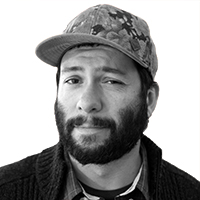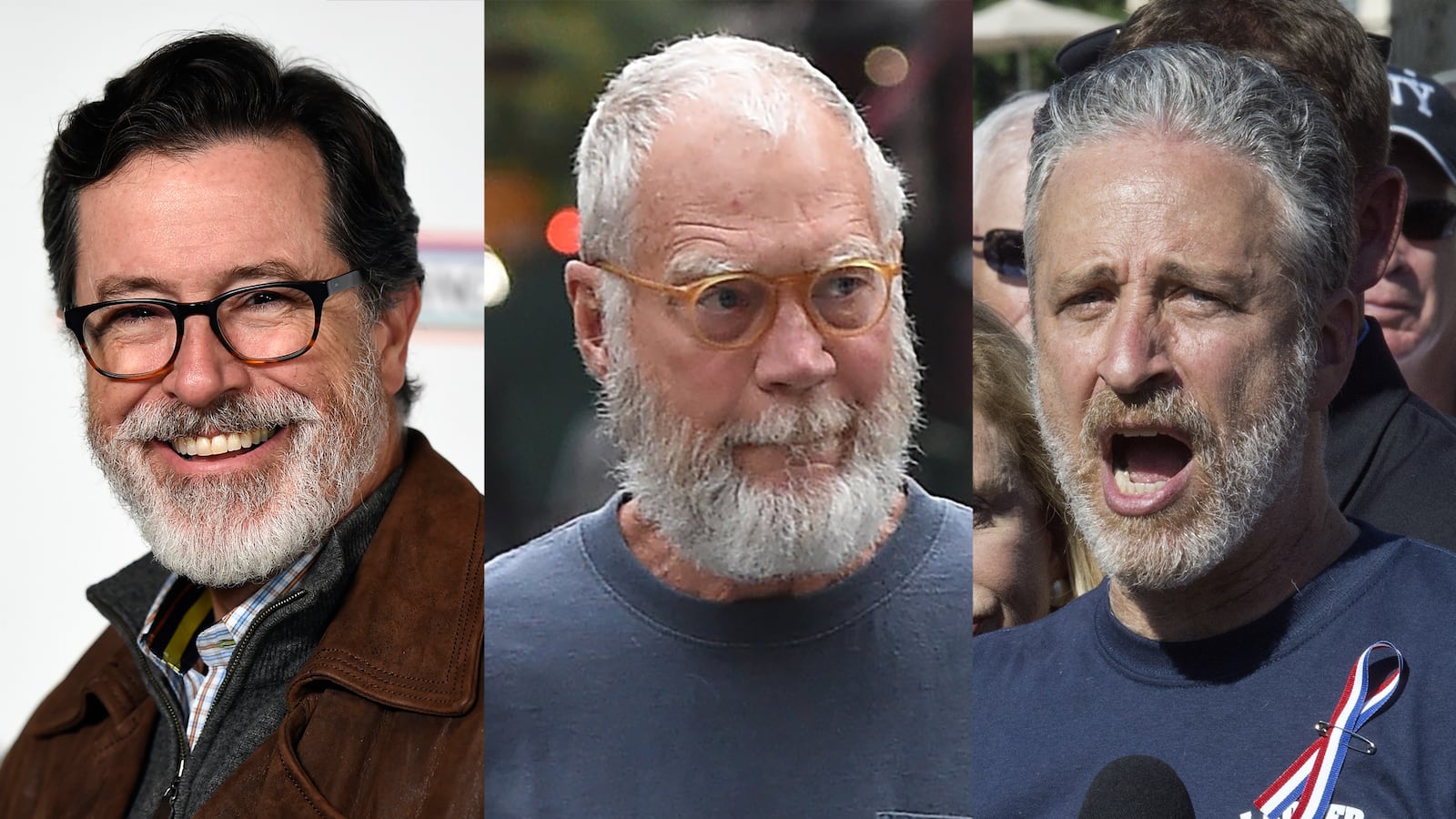Former king of late night television David Letterman turned some heads when he popped up in Boston recently sporting a shaggy beard, looking for all the world like he’s decided to take to the sea in his retirement.
But Letterman isn’t alone in his au natural hirsute-ness. Much like the legendary breakup beard, the retirement beard has become standard issue.
In fact, it’s not even for retirees—any sort of male on a career hiatus is prone to pushing a bushy beard out of his follicles and letting his freak flag fly.
As Jon Stewart’s Daily Show reign slowly counted down, his facial hair started to peek out. As the public took notice, he quickly quipped it away, telling Us Magazine, “The truth is I’m a Japanese snow monkey.”
Now that naked-faced Trevor Noah has officially replaced Stewart, his retirement beard has landed in full force—even though Stewart doesn’t really seem to be taking it easy.
Stephen Colbert, who went full lumbersexual with his “Colbeard” during down time between the Colbert Show and stepping in as Letterman’s replacement on The Late Show, aptly celebrated his return to the public eye by returning to his boyish bare cheeks.
But why do men feel the need to celebrate a lack of work with a face full of fuzz?
Are our venerable men looking to recapture some of the hipness of youth? Or are they just reading a little too much Hemingway in their suddenly much more open schedules? Perhaps it’s a deep-seated part of our evolutionary psychology, something keyed into our chemistry over the eons.
The truth, it seems, is all of the above.
Obviously there’s a sense of freedom that comes with being released from the rigors and scheduling of a regular workday.
A man’s time is now his own to do with as he pleases: Want to quaff Port and fly fish at 10 in the morning? Have at it, and take additional pleasure in having zero societal mores urging you to scrape a few layers of tender skin off your face every morning.
It’s a symbolic nod to a more relaxed lifestyle, to letting it all hang out after so many years of bending to the will of the man.
It is also, according to behavioral biologist and sociologist Barnaby Dixon, Ph.D., a way for men who may be questioning their place in society post-retirement to offset their insecurity with an instinctual show of virility.
When Letterman strolls through Boston looking like a Simpsons’s sea captain, he’s not just consciously choosing to look rugged, it’s something deeper, compensating for what some men find to be a lack of direction post retirement manifesting as a cavalier attitude and salty beard.
“…participants rated bearded men as having higher social status than clean-shaven men,” Dixon writes in a 2012 paper published by the Oxford Journal. “Furthermore, we found that men ascribed higher ratings for perceived social status to bearded faces than women. Our results are consistent with other studies that have shown the beard augments perceptions of social dominance and status.”
And it’s not just a sense of social elevation the beard gives, but also one of strength and dominance, at least on a visual level.
“…it has been suggested that they may intimidate rival males by increasing perceptions of the size of the jaw, overall length of the face, and by enhancing aggressive and threatening jaw-thrusting behaviors,” Dixon continues. “Among the Melpa tribe of Papua New Guinea, when posing an aggressive and threatening facial expression, men have been observed to pull apart the beard with both hands.”
Also, studies indicate that men like Letterman and even perhaps Leonardo DiCaprio, whose furry face mane is rumored to house fleas, could use the addition of a beard to help them stand out when not partaking in their accustomed, as well as recognizable and status-assuring, roles.
“In general, our new research shows that body ornaments appear to be more elaborate in larger groups of primates (where signaling quality and status to strangers is of great importance) and the same may apply to humans which live in fairly large societies,” Dr. Cyril Grueter, an associate professor of biological anthropology at the University of Western Australia in Perth and the study’s lead author, told The Huffington Post this year.
Of course, the style of the beard makes a big difference. People tend to judge a fella with a giant ZZ Top scraggle much differently than, say, a neatly cropped salt-and-pepper job.
Letterman’s, for example, would be a “scholarly beard.”
“I think the association for a lot of people is that it’s scholarly beard, or academics often have those beards,” pogonologist (a beard expert) Allan Peterkin noted in The Huffington Post. “Full beards also have religious associations (think of Moses or Jesus). So that one comes with a lot of historical weight. It’s a bit of an old-fashioned style but we certainly see young men wearing it these days.”
The key is, of course, making sure you are conveying the intended message with your face fur. Good examples of older men who know their proper bristle parameters include George Clooney, Sean Connery, and, for pure YOLO, Jeff Bridges.
While the combination of laziness and IDGAF that comes with one’s golden years may create at least the aesthetic of a modern day pirate, there’s a fine line between “ship captain” and “will work for food.” No matter how many millions you managed to sail off into the sunset with.
Finally, a pro tip: No matter what look you decide to go for, remember, never try too hard. It’s obvious, and overcompensation smells desperate:






